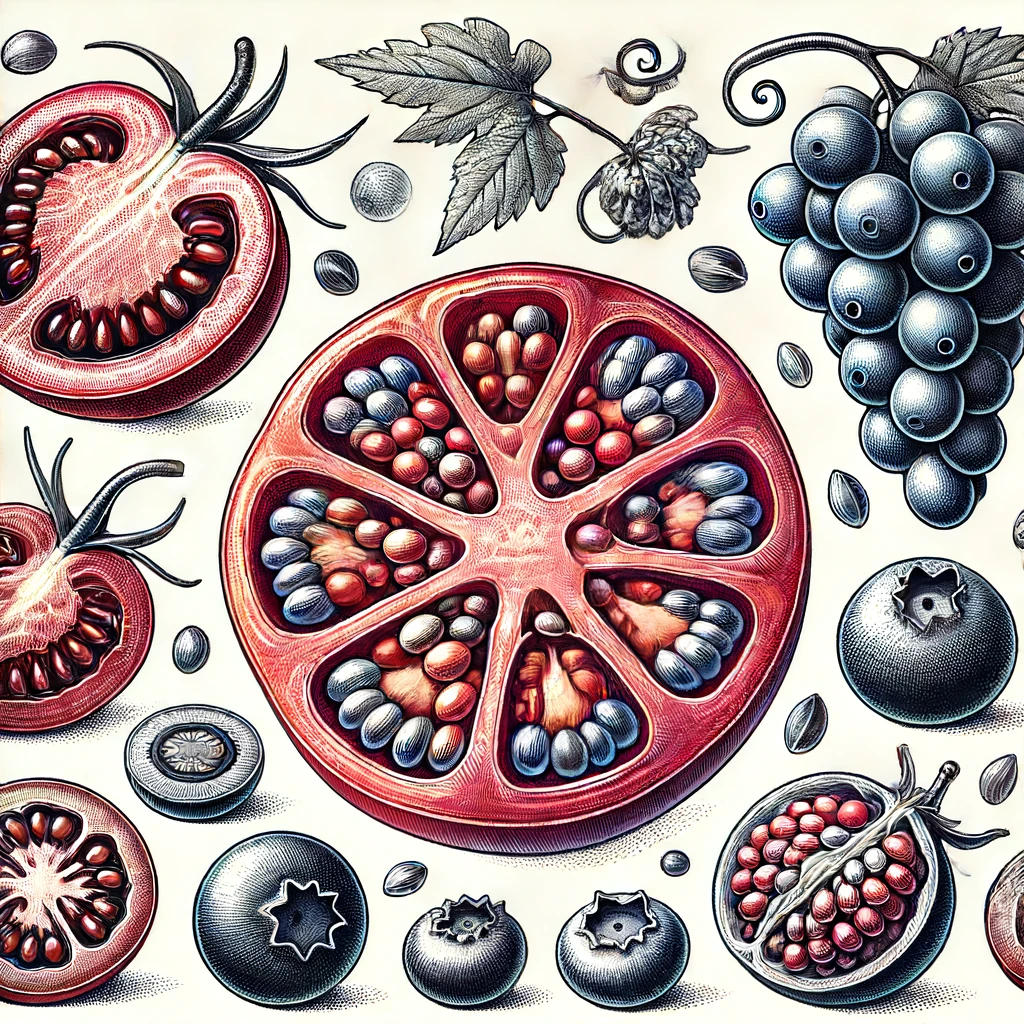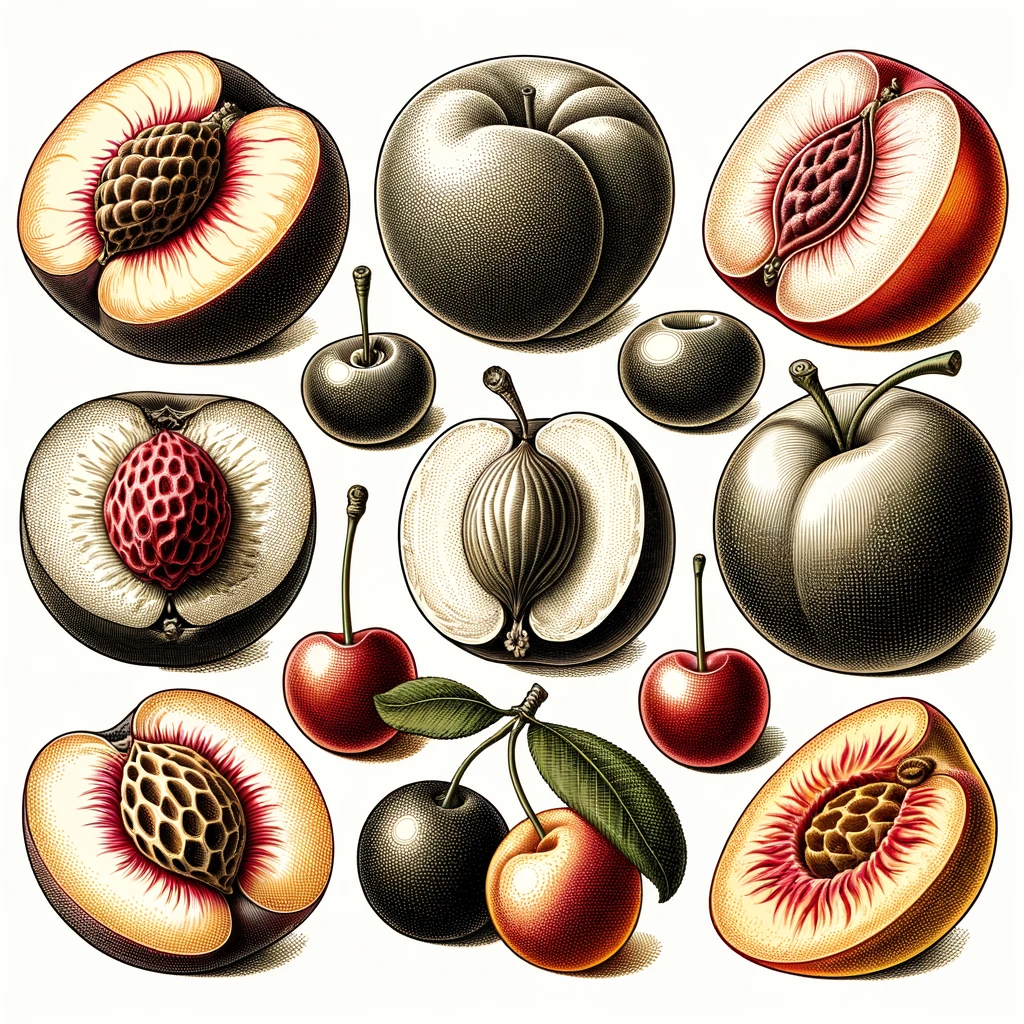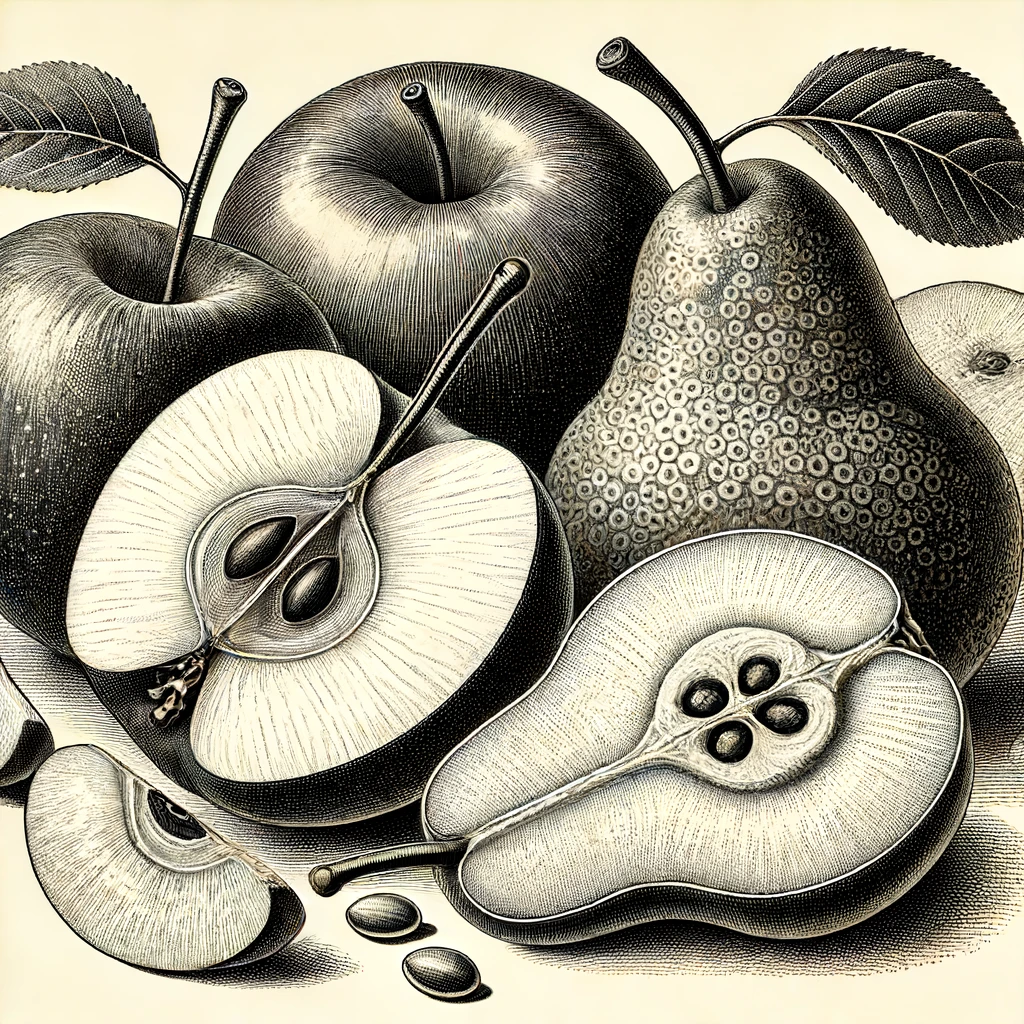Fleshy Simple Fruits
Introduction to Fleshy Simple Fruits
 Fleshy simple fruits are a diverse group of fruits characterized by their development of a soft, often juicy, and edible pericarp (fruit wall) as they mature. This edible part of the fruit is typically what attracts both humans and animals, making these fruits highly sought after for their delicious flavors and nutritional benefits. The soft texture and appealing taste of fleshy simple fruits make them a staple in many diets around the world, from fresh consumption to a variety of culinary uses in desserts, salads, beverages, and cooked dishes.
Fleshy simple fruits are a diverse group of fruits characterized by their development of a soft, often juicy, and edible pericarp (fruit wall) as they mature. This edible part of the fruit is typically what attracts both humans and animals, making these fruits highly sought after for their delicious flavors and nutritional benefits. The soft texture and appealing taste of fleshy simple fruits make them a staple in many diets around the world, from fresh consumption to a variety of culinary uses in desserts, salads, beverages, and cooked dishes.
These fruits play a crucial role in the ecosystem by facilitating seed dispersal through ingestion by animals and humans. When the fruits are eaten, the seeds often pass through the digestive system of the consumer and are later excreted in different locations, promoting the spread and growth of the plant species. This natural process not only helps in the propagation of the plant but also in maintaining biodiversity and ecological balance.
Fleshy simple fruits can be further categorized into several types based on their internal structure and seed arrangement. These categories include berries, drupes, and pomes, each with unique characteristics that define their appearance, texture, and seed dispersal mechanisms. Berries, for instance, have multiple seeds embedded within the fleshy fruit, while drupes have a single seed encased in a hard stone surrounded by soft flesh. Pomes, on the other hand, have a core containing seeds that is encased in a fleshy outer layer derived from the floral tube.
Understanding the different types of fleshy simple fruits and their distinct features can enhance one's appreciation for these fruits, whether from a culinary, nutritional, or ecological perspective. By exploring the various forms and functions of these fruits, gardeners, cooks, and fruit enthusiasts can make informed choices about cultivation, consumption, and conservation, contributing to a healthier and more diverse environment
Types of Fleshy Simple Fruits
Berries
Berries are fleshy fruits that develop from a single ovary and typically contain multiple seeds embedded in the flesh. They are entirely fleshy, with no hard layers, and are often juicy and sweet.
Drupes
Drupes, also known as stone fruits, have a fleshy outer layer and a hard inner shell (stone or pit) that encases a single seed. The outer flesh is usually edible, while the stone is not.
Pomes
Pomes are a type of fleshy fruit where the flesh develops from the receptacle (floral tube) surrounding the ovary. The seeds are enclosed in a core, which is often not consumed.
Detailed Examples and Images

Berries
Berries are fleshy fruits that develop from a single ovary and typically contain multiple seeds embedded in the flesh. These fruits are entirely fleshy, with no hard layers, and are often juicy and sweet. Berries are a favorite in many diets due to their rich flavors and nutritional benefits. They are widely appreciated for their refreshing taste and vibrant colors.
- Berries are known for their high vitamin content, particularly vitamin C and vitamin K.
- They are often used in a variety of dishes, including desserts, salads, and beverages.
- Common examples of berries include tomatoes, grapes, and blueberries, which are easily recognizable and widely consumed.
- Berries are also rich in antioxidants, which help protect the body from free radicals and support overall health.
- They can be grown in home gardens with proper care, making them accessible to many gardeners and fruit enthusiasts.
- Berries have a relatively low calorie content, making them a popular choice for healthy snacks and weight management.

Drupes
Drupes, also known as stone fruits, have a fleshy outer layer and a hard inner shell (stone or pit) that encases a single seed. The outer flesh is usually edible, while the stone is not. These fruits are highly valued for their delicious taste and versatility in various culinary applications. Drupes are often enjoyed both fresh and dried, offering flexibility in how they are consumed.
- Drupes are rich in essential vitamins, especially vitamin A, vitamin C, and potassium, contributing to a healthy diet.
- Common examples include peaches, cherries, and olives, each offering unique flavors and textures.
- Drupes are a significant source of dietary fiber, which aids in digestion and supports overall health.
- They are used in a variety of culinary dishes, ranging from sweet desserts to savory meals, showcasing their versatility.
- Drupes also contain healthy fats, particularly in fruits like olives, which are used to produce olive oil.

Pomes
Pomes are a type of fleshy fruit where the flesh develops from the receptacle (floral tube) surrounding the ovary. The seeds are enclosed in a core, which is often not consumed. Pomes are enjoyed for their crisp texture and refreshing taste, and they play a significant role in many cultures and cuisines. They are commonly used in both fresh and cooked forms.
- Pomes are an excellent source of dietary fiber and vitamins, especially vitamin C and various B vitamins.
- They are commonly eaten fresh, but can also be used in cooking and baking.
- Common examples of pomes include apples and pears, which are staples in many diets worldwide.
- Pomes are often used to make juices, sauces, and preserves, adding versatility to their use.
- They are also popular in making ciders and other beverages, providing a wide range of culinary applications.
Conclusion
Fleshy simple fruits are a diverse group of fruits that are vital for both human consumption and ecological seed dispersal. Understanding the different types of fleshy fruits can enhance your gardening knowledge and appreciation for the variety of fruits available.
For more information on other types of fruits, explore the following links:
Additional Resources
To enhance your understanding, we provide a range of articles related to fruit development, uses, nutritional benefits, and cultivation. Explore these topics to become a more knowledgeable gardener and fruit enthusiast.

